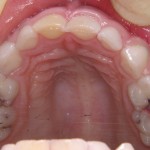
Conventional dental caries removal is normally achieved using rotational and pieces although a range of alternative techniques including lasers here abrasion ultrasonic technique and chemo mechanical approaches have been used. In 2003 papacarie a proteolytic gel was released containing papain and a bactericide and since then a number of clinical studies been undertaken.
The aim of this review was to evaluate the effectiveness of chemomechanical (Papacarie) removal of caries in primary teeth
Methods
Searches were conducted in the PubMed, Embase, Cochrane Database of Systematic Reviews, Cochrane Central Register of Controlled Trials, Google Scholar, and Web of Science databases. Randomised controlled trials (RCTs) and a prospective clinical controlled trials (CCTs) were considered. Two reviewers independently abstracted data and assessed risk of bias using the Cochrane tool. Studies were combined using weighted mean difference (WMD) standard deviation (SD), and its 95% confidence intervals (CIs) of the outcome variables, bacterial CFU, pain scale scores and treatment time.
Results
- 15 publications met the inclusion criteria with 10 studies (6 RCTS, 4CCTs) included in the quantitative analysis.
- There was a significant reduction in microbiota in carious dentine in the papacarie group MD= 0.57(95%CI; 0.04-1.09) P=0.03 [ 2 studies].
- 10 studies considered pain perception with 3 studies contributing to a meta-analysis. Feeling of anxiety declined more in the papacarie group MD= -1.01(95%CI; -1.72 to -0.030) P=0.005.
- Treatment time was significantly higher in the papacarie group MD= 200.79 (95%CI; 152.50 to 249.09) P < 0.00001 [7 studies].
- 3 studies considered patient acceptability.
- Only 2 studies reported long-term follow up, one after 1 month the other to 18 months.
Conclusions
The authors concluded: –
Papacarie exerts a positive effect in reducing the bacteria and decreases the pain during caries removal in primary teeth although it costed a longer treatment time compared with the conventional method.
Comments
A broad range of databases has been searched for this review with 15 studies meeting the inclusion criteria. However, only 10 contributed to the quantitative analysis because of missing data in 3 studies and 3 publications reporting data from a single trial. Six of the 10 included studies were considered to be RCTs and 4 CCTs although the characteristics of included studies table only identifies 3 as CCTs. A risk of bias table is presented for 13 studies with 4 being considered to be at unclear risk of bias with the remainder being at low risk of bias. It might have been helpful for the reader to have restricted this table to the 10 studies included in the quantitative analysis.
The findings suggest that use of papacarie may reduce bacterial levels and be a less painful approach, although it does take longer which may be a disadvantage for some patients. It is worth highlighting that the recent Cochrane review by Dorri et al (Dental Elf – 10th Jan 2018) on the use of atraumatic restorative technique in primary teeth also reduced pain compared to conventional caries removal although a higher risk of restoration failure. Restoration failure was not assessed in this current review as only one of the included studies had a follow up period of longer than 1 month.
Links
Primary Paper
Deng Y, Feng G, Hu B, Kuang Y, Song J. Effects of Papacarie on children with dental caries in primary teeth: a systematic review and meta-analysis. Int J Paediatr Dent. 2018 Apr 23. doi: 10.1111/ipd.12364. [Epub ahead of print] Review.PubMed PMID: 29682851.
Other references
Dental Elf – 10th Jan 2018
Dental Elf – 5th Jun 2015
